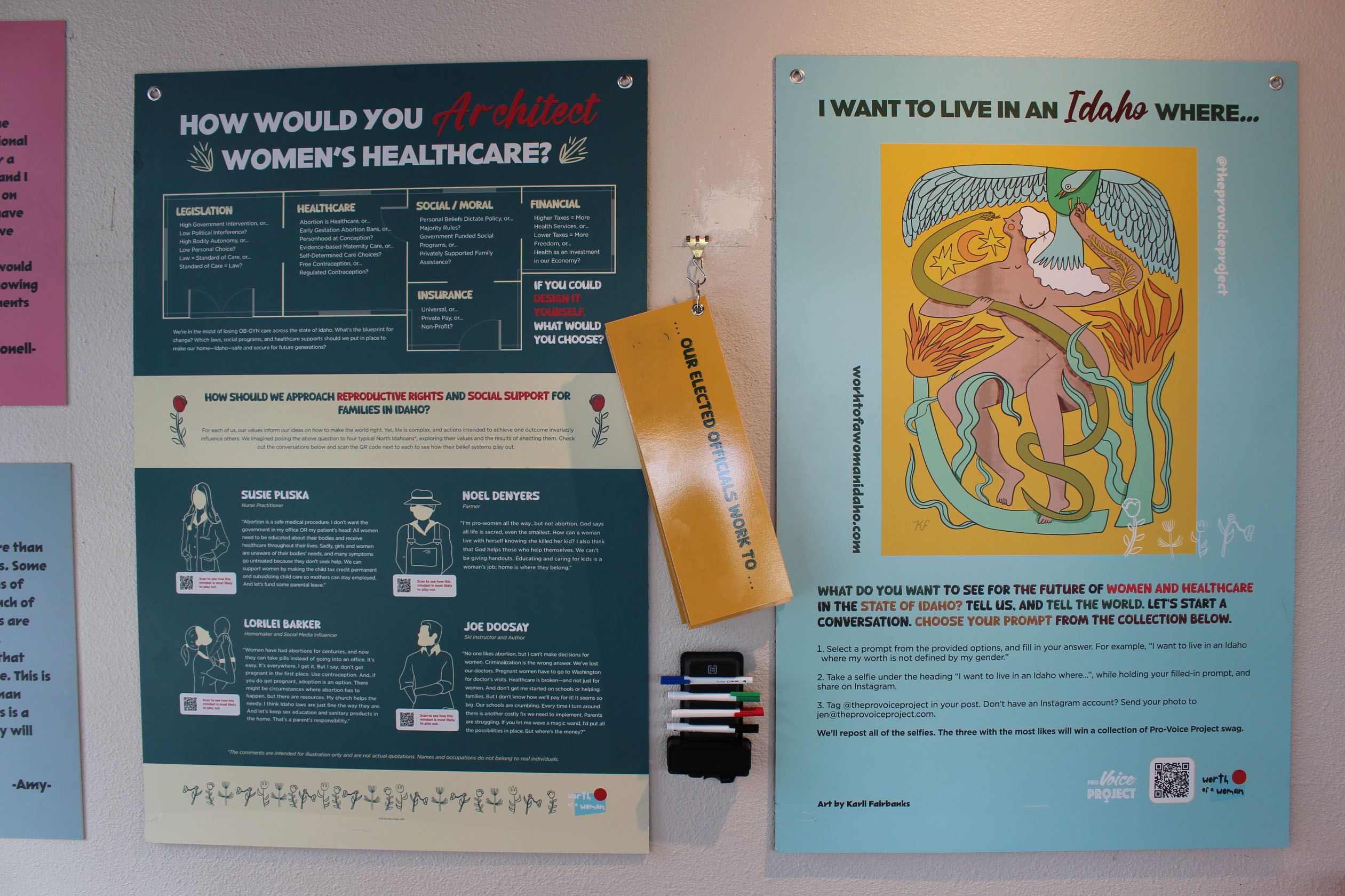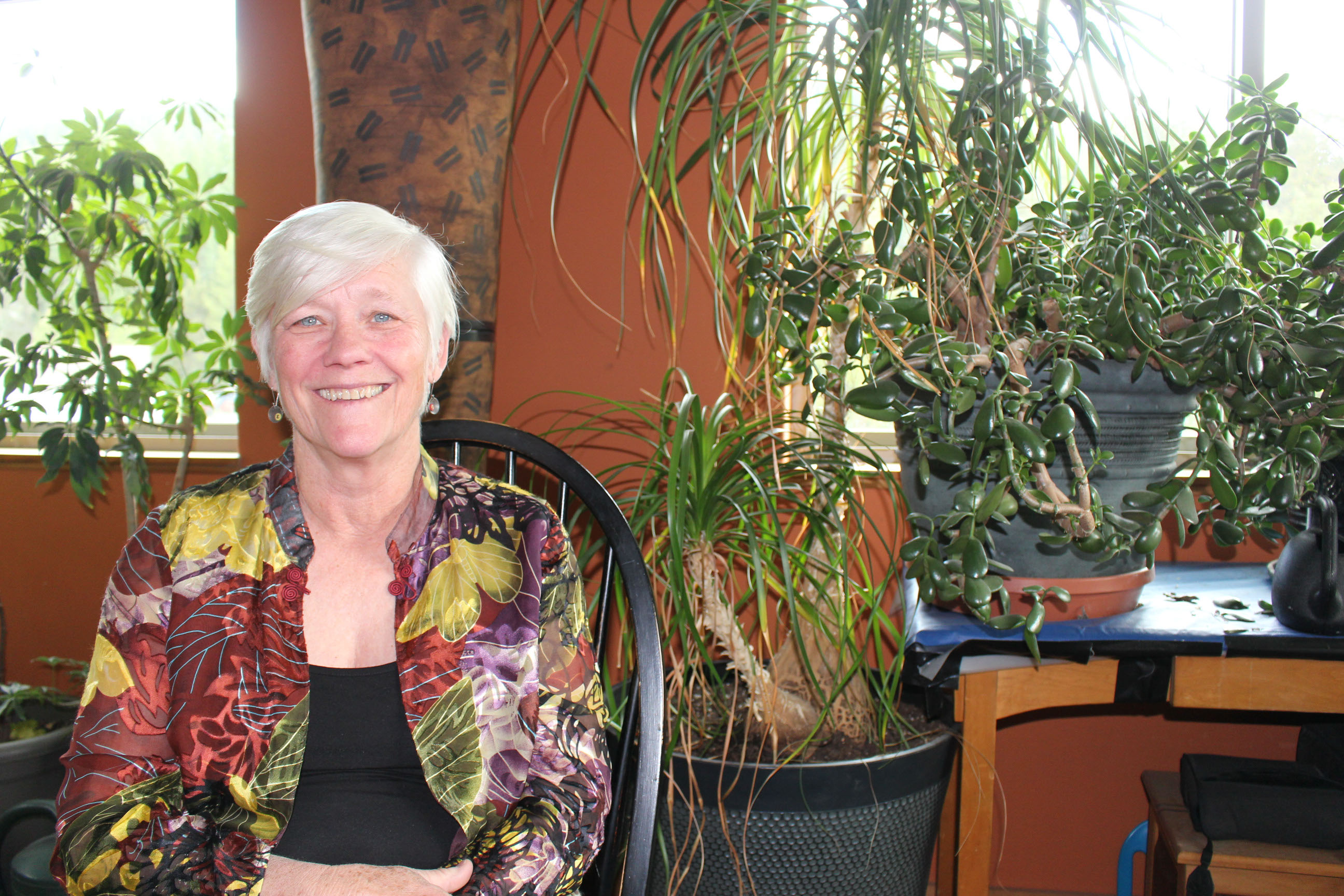SANDPOINT, Idaho — An ultrasound in February found a cyst growing in her uterus and that her uterine lining was abnormally thick, leaving Jonelle Anderson with more than a little anxiety about her diagnosis and treatment.
For Anderson and other patients in this rural community who need gynecological care, the stress of receiving a diagnosis is compounded by the challenges of getting to the doctor.
After the initial ultrasound, Anderson’s primary care provider referred her to an obstetrician-gynecologist in Coeur d’Alene, about an hour away, for more testing.
In the town of Sandpoint, a city of about 10,000 people in Idaho’s Panhandle region, it has become increasingly difficult to obtain care for more serious gynecological problems such as hysteroscopy, endometriosis or polycystic ovary syndrome. The state law criminalizing abortion has forced many OB-GYNs to perform abortions. Leave the city about a year ago.
The effects have been far-reaching. OB-GYNs leaving Sandpoint were also caring for patients in nearby remote areas, such as Bonners Ferry, which is about a 40-minute drive in Idaho’s northernmost county. has spoken Doctors don’t feel safe practicing medicine because they could face criminal charges for caring for their patients. Republican lawmakers in Idaho say doctors being used In an effort to roll back the ban, he refused to amend the law this year.
At least two hospitals, including Bonner General Health in Sandpoint, ended labor and delivery services within 15 months of the state criminalizing abortion in 2022, according to the Idaho Coalition for Safe Healthcare, a group advocating for rolling back the state’s strict abortion ban. During that same time period, the number of OB-GYNs practicing in Idaho 22% dropMany rural residents rely on consultations with medical specialists in urban parts of the state, which already struggle to provide care, the report authors said.
These departures have exacerbated care gaps and increased barriers between patients and care, including Anderson, 49.
Anderson’s car broke down while she was on her way to see an OB-GYN in Coeur d’Alene a few weeks after her initial ultrasound. Her husband took off work to drive her to the rescheduled appointment that same day. After several hours of hassles, she made it to the appointment, which lasted about 15 minutes. There, the doctor told her she’d have to come back for a hysteroscopy — an exam that checks the cervix and the inside of the uterus — a few weeks later, followed by another appointment to see the results.
Four months later, in June, preliminary results showed the lump in Anderson’s uterus was not cancer. She said she was relieved, but still worried about being close to menopause and not having the help of an OB-GYN to help her deal with any symptoms or health issues.
“It definitely added a huge level of stress that was even greater because I had to be transported much further,” Anderson said. “Three years ago I would have been 10 minutes away from my appointment, not 60 minutes away.”
The difficulties that patients face weigh heavily on the specialists who have left.
OB-GYN Amelia Huntsberger said she and her husband are still dealing with a sense of grief after being “forced out of Idaho” last year. They had lived in the state for more than a decade and practiced in Sandpoint. Though it was a difficult decision to move, she said, she has no doubt it was the right decision for her; her husband, who was a doctor in the emergency room at Bonner General; and their children.
“I think about who we are as people,” Huntsberger said. “What do we value and do our actions reflect our values?” She said restricting access to care for women and their babies, pregnant or not, shows that lawmakers don’t see them as important.
Usha Ranji, associate director of women’s health policy at KFF, said she has heard of providers leaving states with strict abortion restrictions, such as Idaho. Some are also recent medical graduates Avoiding residency positions Ranji said abortion restrictions have been put in place in states, making it harder to replace providers who leave.
Bonner General spokeswoman Sandy Brower said the hospital is working to hire a gynecologist and is focused on building its family provider team. She said the hospital’s other providers are still treating women before and after pregnancy, but not during labor unless it’s an emergency and the person can’t be transported.
Susie Keller, CEO of the Idaho Medical Association, said the number of doctor vacancies in the state is growing and the number of applicants has “been drastically reduced and it’s taking about twice as long as normal to fill those jobs.”
“We are watching our healthcare system collapse,” Keller said.

As more and more community members feel the effects of a strained healthcare system, some are following the path of doctors – they’re considering leaving. Anderson is one of them.
She said local education issues play a big role in that decision-making process, as she thinks about her 9-year-old daughter’s future. But access to women’s health care is another piece of the puzzle.
Anderson said, “If I don’t get the care that I need and he doesn’t get the care that he needs, is that really a place we want to live?”
Ranji said polling shows that healthcare is a priority for people, so it could play a role in decisions about where they want to put down roots. And it could lead to another way for community members to respond to changes in local care — by voting in state elections.
Results from the May primary election in northern Idaho showed voters favoring Republican candidates with more liberal views on abortion. Former state senator Jim Woodward child hair green Senator Scott Herndon, a fellow Republican seeking re-election to his seat in the Legislature.
Woodward, who describes himself as a pro-life candidate and takes a stance against elective abortion, supports efforts to include exceptions for the mother’s health and to remove the threat of felony charges against doctors who perform abortions. Herndon, on the other hand, sparked strong reactions during last year’s legislative session when he Sponsored a Bill This would remove existing narrow exceptions to the already strict law for rape and incest.

Katherine Larson, 66, is campaigning as a Democrat for a seat in the state House of Representatives representing most of Boundary and Bonner counties, the two northernmost counties in the Panhandle region. She also recently had first-hand experience with the lack of care created by the exodus of OB-GYNs in Sandpoint.
In January, Larson went to the emergency room at Bonner General, a 25-bed critical care hospital, complaining of severe chest pain. A cardiologist suggested an infection might be to blame. Larson said she also experienced dizziness and a rapid heartbeat and later developed symptoms of a urinary tract infection. She was given antibiotics to treat the infection, but the symptoms returned.
More testing eventually revealed the root of the problem — Larson was dealing with a prolapsed bladder, which isn’t life-threatening but does cause discomfort or pain and affects 1 in 3 Women aged 60 years and above.
After nearly five months of back-and-forth with providers in Post Falls and the eastern Washington city of Spokane, she scheduled an appointment for surgery in early June in Spokane, which is more than an hour’s drive from Sandpoint. After the surgery, during which doctors implanted a mesh structure to support her bladder, Larson is spending six to eight weeks recovering before heading into the final stretch of election season.
She said the November election will help others in her party figure out whether it will be possible to work with all parties to ease restrictions on abortion policy during next year’s legislative session. She wants to reduce the shortage of essential providers throughout the state.
“People don’t feel safe,” Larson said.
The U.S. Supreme Court ruled June 27 that Idaho must continue to allow abortions in medical emergencies for now. The decision came in a lawsuit filed by the Biden administration, which argued that such care is required under the federal Emergency Medical Treatment and Labor Act.
But the ruling doesn’t provide a permanent solution. It sends the case back to the lower courts. Confusion remains over a doctor’s ability to perform an abortion even in emergency situations, and the Idaho Medical Association said it will continue to work toward an exception clearly related to the mother’s health within state law during next year’s legislative session.
“We still need more clarity for our state’s doctors,” OB-GYN Megan Casper said in the medical association’s press release.
idahos-ob-gyn-exodus-throws-women-in-rural-towns-into-a-care-void-kff-health-news




